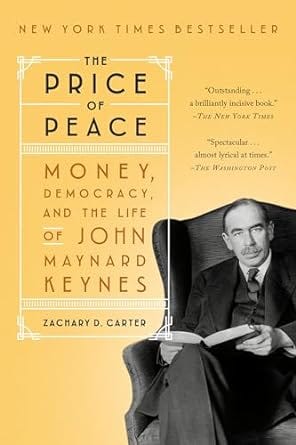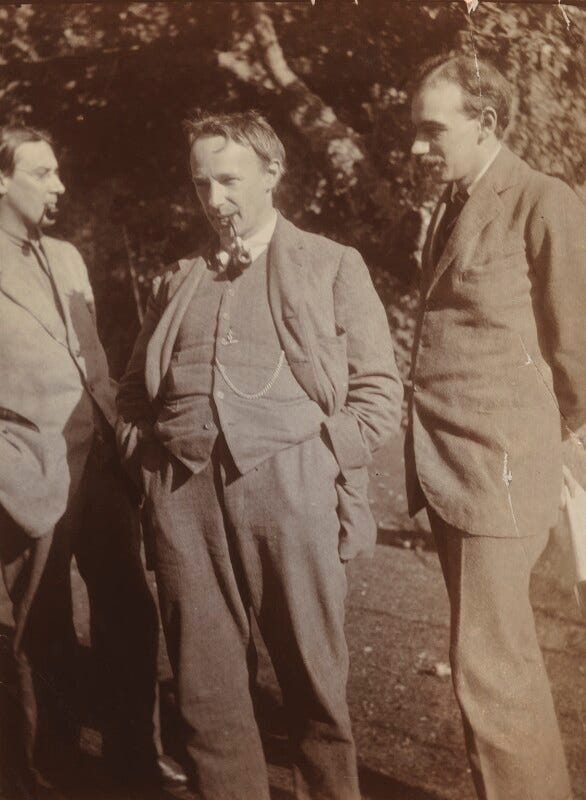
Fredric Jameson once wrote that modernism temporalizes and postmodernism spatializes; this is also true of the economics profession. Keynesian economic theory was introduced to a wide audience in the United States after WWII primarily through Paul Samuelson’s 1948 textbook Economics, now published in at least nineteen editions. However, Lorie Tarshis’s 1947 Elements of Economics was the first Keynesian textbook in America. It was the time of the Red Scare; professional conspiracy theorists quickly canceled it. (Only instrumental approaches could survive in the overheated political environment. Unfortunately, America today remains a Puritanical place where anything can be canceled during a moral panic.) Samuelson, along with John Hicks, Franco Modigliani, and Alvin Hansen, developed neo-Keynesian economics, also known as the neoclassical synthesis, which dominated economics in the United States in the 1950s, 1960s, and 1970s. It still has supporters such as Paul Krugman and Joseph Stiglitz, whom Samuelson influenced at the Massachusetts Institute of Technology. This theory tends to interpret social concerns in a minimalistic, value-neutral manner as externalities that can be priced into economic models.
Zachary D. Carter’s book The Price of Peace portrays Keynes as a well-rounded intellectual, a political economist in the true sense, and a worldly philosopher. Carter aims to dispel Keynes’s technocratic American reputation, which he believes is unjustified due to America’s peculiar postwar history, by using insights from the heterodox school of post-Keynesian economics. According to Carter, Keynes thought the role of time is indispensable, uncertainty is irreducible, and human agency cannot be eliminated from economics. Commercial processes are neither autonomous nor orthogonal to both society and the state but depend upon social norms and political power. Keynes was skeptical and pragmatic about pure technique, seeking an orderly way of thinking about interdependencies under inherently unstable circumstances rather than a formal machine that generates infallibly precise answers. His approach was Burkean, prudentialist, and conventionalist.
Carter’s book wisely focuses on Keynes’s professional career and afterlife, downplaying personal details. At its best, Carter examines decision points in Keynes’s career that inform and motivate his general theoretical approach. Carter also highlights the philosophical assumptions informing Keynes’s outlook. Keynes synthesized many existing ideas into his perspective, including the multiplier, the marginal propensity to consume, the inducement to invest, liquidity preference, animal spirits, and the paradox of thrift. It is nice that Carter gives them a lived context. Keynes was not only a modernist but simultaneously and paradoxically something of a Platonist, always attempting to see the whole picture, bringing all considerations to bear upon a decision.
G.E. Moore’s moral philosophy indirectly influenced Keynesian economics. Moore’s ethical system uses organic unities of value, which means that axiological wholes can be more than the sum of their parts in a composite that is ultimately not structured causally. Moore also argued that the highest goods in life were friendship, beauty, and knowledge. This is a morality of affluence. Earlier systems of ethics and economics were written in times of scarcity when the continuous generation of most goods was necessary. Spencer’s ethical system was inseparable from uninterrupted adaptation, while Mill’s doctrine involved personal development at its Aristotelian core. Friedrich List’s economics was entirely path-dependent, emphasizing national growth. Yet, once quality-of-life considerations become possible, we can choose which efficiencies (and inefficiencies) are worth having.

Irreducible uncertainty! Keynes’s Bayesian epistemology has optimistic and restrained consequences. The interpretation known as objective Bayesian probability — that fundamental evidentiary relationships exist — has been held by philosophers from Rudolf Carnap to David Stove. Keynes was one of its most notable contributors. It runs on the optimism that we can learn from experience. Since old ideas can entrench themselves to the point where they have more influence than vested interests, we must update our beliefs rationally. On the other hand, Keynes distrusted mathematics as a bulletproof guide to human reasoning and was skeptical about the wisdom of complex and challenging long-term endeavors. The more moving parts, the higher the chance something will go wrong. We should pursue many small goods with a high probability of attainment rather than striving for a grand design with a tiny probability of realization. Keynes’s experience eventually pushed him away from his earlier outlook and toward subjective Bayesian probability, the idea that probability is like coherent betting. Keynes felt that, given a sufficient interval of time, we would eventually have to make decisions without knowing what the future would bring. A financial market, for example, only appears rational under stable conditions. Introduce a shock into a system, and the meaning of rational calculations evaporates.
Keynes runs his liberalism on a Burkean operating system. (An organic society is an artifact of conservative thought.) He argued that money was not a custom developed by local traders but a sophisticated tool of rulership that emerged with other centralizing developments of state power, similar to official written languages and standardized weights and measurements. The conceptual rhythms articulating commercial action are defined and supported by political authority at scale. Market economies are not a distinct realm independent of the state; we cannot remove the political from political economy. Nor are markets purely mathematical phenomena. This implies that economics cannot be a hard science and instead resides in the flexible realm of custom, authority, rule of thumb, and continuous adjustment, mindful of the vagaries of mass psychology.
Keynes was not an economist’s economist, that is, not someone who masters an entire body of thought. He was more of a practical man who made decisions in a turbulent environment where the textbook was useless. During the 1914 crisis, for example, Keynes contradicted the textbook solutions of the bankers and recommended allowing foreigners to access gold while temporarily printing money at home. It worked, stabilizing Britain at home and abroad. Similarly, he strongly warned against heavily punishing Germany after the war, arguing that it would lead to another war twenty years later. (Germany was heavily punished, and it led to another war twenty years later.) Keynes always kept the stability of an entire system in mind.

Keynes combined intuitions about the impossibility of autonomous and pure market processes, the lack of a comprehensive rational nexus uniting time and decisions under uncertainty, and the irrational dependencies of any rational system. The modernist, professionalist consequences Keynes derived from this synthesis unsettle many opponents more than the theoretical machinery, the validity or invalidity of which ought to be a mere matter of intellectual inquiry. As an absurd example, about a decade ago, the historian Niall Ferguson criticized Keynes because his sexual orientation supposedly implies a disregard for time horizons extending beyond the human life span. (Ferguson apologized after the inevitable dogpile.) It was a fair remark, but putting that aside, it enthymematically contained a false premise. Both Ferguson and his critics missed the full context of Keynes’s quote about us being dead in the long run — the entire excerpt is about economics being useless if it cannot address unstable conditions. So, what’s going on here?
Economics often doubles as a theodicy in its off hours. Why do we suffer? Why don’t we all enjoy the blessings of life? Supposedly, because we don’t work hard enough. Our innate depravity. We must grind until we are ninety: Thus Spake Ben Shapirothustra. We don’t like to believe we work for nothing; we cope by telling ourselves we’re virtuously improving society. While our toils do not logically entail that we are part of the Elect, they are evidence of our faith. We prefer to be winners, but what we do and what anyone does supposedly still matters, whether we are winners or not. But what if labor is meaningless, and we’re squandering our short lives? Work in a post-scarcity society is largely only a means to facilitate consumption. Keynes believed that enterprise builds things up, not abstinence. His modernism reduces economic events such as recessions to technical problems that have nothing to do with the malice and avarice of capitalists or the sloth of workers. Carter wants us to see Keynes as having wide horizons, but we can also see how the spirit of what he is doing is irresistible to professionally-minded economists.
Prosperity is not hardwired into humanity; political leadership must orchestrate and sustain it. We could organize society such that we work drastically fewer hours every week, or sharply lower the retirement age, and live lives with far more leisure. Each year, as productivity gains pile up, leisure becomes increasingly possible. This is not necessarily a recommendation — there are great benefits as technology advances — but it is an option. Traditionalist thinking may find it difficult to accept how Keynes’s economics parallels developments in physics, where the world is more like a casino than something with smooth continuities. Merit alone does not guarantee success. Unlike earlier centuries, we are not dealing with problems of resource constraints where only the most vigorous and energetic pull themselves out of the mire. While we’ve all heard the sermon about infinite desires and scarce resources, a mismanaged financial system is a far greater threat to our well-being, as the 2008 crash painfully demonstrated. However, the bold aspect of Keynes stems from his rejection of the Protestant and, ultimately, the Gothic nucleus of much economics that implicitly makes infinite striving mandatory. Moore and the Bloomsbury set were most radical when breaking free from this Faustian mode of life. This is what conservatives find shocking about Keynes, not the multiplier.
Thomas Malthus is often thought of as a catastrophist. The term better describes Keynes, though the fit is imperfect. Many overlook that Malthus’s economics is a steady-state system. Malthusian humanity always presses against conditions of scarcity; we optimize and meliorate the best we can. In contrast, Keynes’s economics opens the possibility of economic catastrophe since we live under conditions of affluence, a distance of many accumulated layers from raw survival. There is a much greater vertical and horizontal distance for everything to fall when a massive disequilibrium event occurs, such as a natural disaster, a pandemic, a financial panic, or a war.
I like to visualize the economy’s sectors as a 3D bar chart. Imagine a sector experiencing a sudden shock that knocks the height off several bars. Simultaneously, think of a bunch of Marshall-style intersecting demand and supply graphical curves for each industry, like thermometers. More shocks happen elsewhere in the 3D picture as prices are too slow to adjust in the Marshallian graphs. Given a critical mass, this leads to the deterioration of the entire system, much like a runaway chain fission reaction or floors of a building falling in on themselves. I’m sure some economics nerd and his graduate students created a meltdown simulation decades ago and loaded it with all sorts of factors. Keynes is saying that the government can quickly step in and alter some parameters via targeted spending and other methods at some point to halt a total collapse.

The possibility of such a situation has several implications. Firstly, depending on the severity, markets may not have a mechanism to autocorrect within a reasonable time. It’s a consequence of layer upon layer of accumulated development and having a longer distance to unravel from top to bottom and from the center to the periphery. Given sufficient time, the fire might burn out at the 1820s’ living standards, a recipe for dangerous political outcomes. Secondly, a meltdown does not reflect fluctuating market prices expressing the centuries of accumulated tacit wisdom of rational actors pursuing their self-interest. These aren’t bets on the value of different enterprises but on the judgments, often speculative judgments, about others who are also making judgments under conditions of uncertainty about the future. Thirdly, the collapse can be uneven, settling in an undesirable equilibrium, which is dangerous when it impacts the labor market. This is a Keynesian consequence of the impetus to save differing from the impetus to invest. When we’re not at scarcity levels, unspent income at scale distorts demand. All of this means that Say’s Law, the idea that an economy’s ability to consume grows out of its productive capacity, is not so much false but irrelevant.
Music
The sun never sets on the British Empire! Today’s music is Elgar’s second symphony, an expansive composition from roomy imperial times. Modernism was in a good mood in 1911 before the blackpill of 1914. Elgar here manifests a very English sense of the marvelous. The marvelous as an aesthetic requires a worldly focus, comfort with novelty, and the indulgence needed to delight in one’s accomplishments. It is associated with human achievements, inventions, creations, and extraordinary feats. It differs from wonder in that the wonderous is typically natural. Delight in modernism contains its opposite — a hidden sense of menace lurking in the shadows of what is to become, sorrow and nostalgia for what has been lost, and an interplay between confidence and despair, which is fitting since in Keynes’s writings, it is an open question whether the apparatus of modern life will get away from us or if we will succeed in taking the reins.




